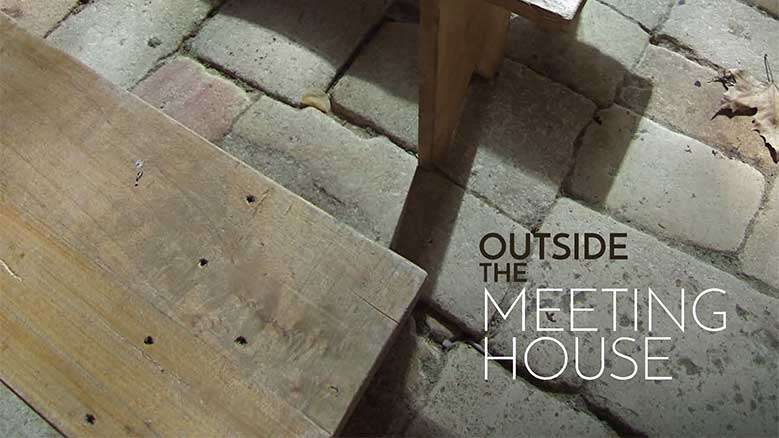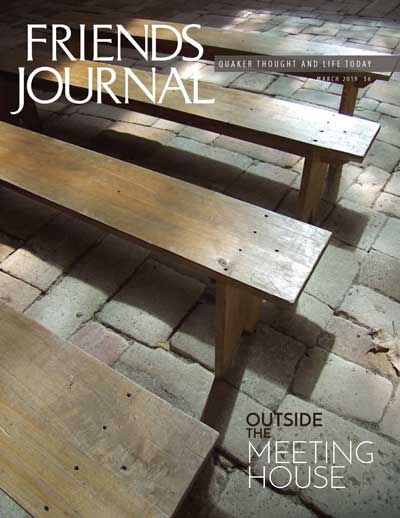
There’s an old Quaker story about the newcomer visiting their first Quaker meeting. They sit down and follow the example of everyone sitting silently until handshakes and the rise of meeting, then timidly ask the Friend sitting next to them “Wait, when does the service begin?” The answer comes back: “Now that the worship has ended.” Bada boom!
As corny as this joke is, there is a long history of Friends preaching and witnessing outside of the confines of the meetinghouse. George Fox’s Journal is full of unconventional worshiping; he had a particular penchant for preaching from any bit of high ground he could find, like a tree or rock outcropping. His contemporary James Nayler is most remembered for reenacting Jesus’s Palm Sunday entry into Jerusalem by dramatically riding a horse down a main road into Bristol.
Modern-day Friends continue to find unconventional places to worship, from bank lobbies to political protests. Many more Friends find their Quaker practice has given them surprising skill sets that they can use as part of their careers. As a religious movement that began as a response to the churchiness of other denominations, it’s part of our DNA to challenge the idea that worship is limited to a set place or time.
The path to Yohannes “Knowledge” Johnson’s Quakerism was set in motion with an invitation to sit in worship with a prison worship group three decades ago. I was fascinated to read how Johnson prepares himself for waiting worship inside the noisy confines of a state prison.
Our Quaker witness is not confined to a spiritual interior. Brad Stocker, the clerk of the grounds committee of the meeting in Miami, Florida, is very attuned to the witness of our meetinghouse surroundings. The way we treat our properties says a lot about our relationship with the land and our neighbors. As stewards of these plots of physical landscape, what messages do we give about our care of our resources and of the earth?
Quaker political witness goes old school with a trio of articles about Friends worshiping in the midst of political action. Lynn Fitz-Hugh, Elizabeth Claggett-Borne, and Debby Churchman all find ways to bring a Quaker presence to distinctly ecumenical gatherings far outside any meetinghouse walls.
Not all witness happens amidst bullhorns and police barricades and counter-protests, of course. The ever-deepening opioid crisis has touched so many families; our Quaker faith doesn’t make us immune to the problems or the heart-wrenching pain of seeing family members fall into addiction. Like many of us, Eric Hatch at first tried to ignore the issue, but felt the telltale nudge of a leading. He turned his tool—his camera—and began a deceptively simple witness: observation. Like so many Quaker leadings, it took awhile for him to even grasp its scope: “The underlying goal—though I didn’t articulate this until well into the photography phase—was to create the possibility of compassion.” His portraits are beautiful and sad, but also full of unexpected hope.
We often hear stories of Friends worried about the future of our spiritual faith. When I look back at the eras of dramatic growth in our religious society’s past, one constant element seems to be a willingness to share ourselves with the world outside the meetinghouse doors. We still have so much to offer.




Comments on Friendsjournal.org may be used in the Forum of the print magazine and may be edited for length and clarity.